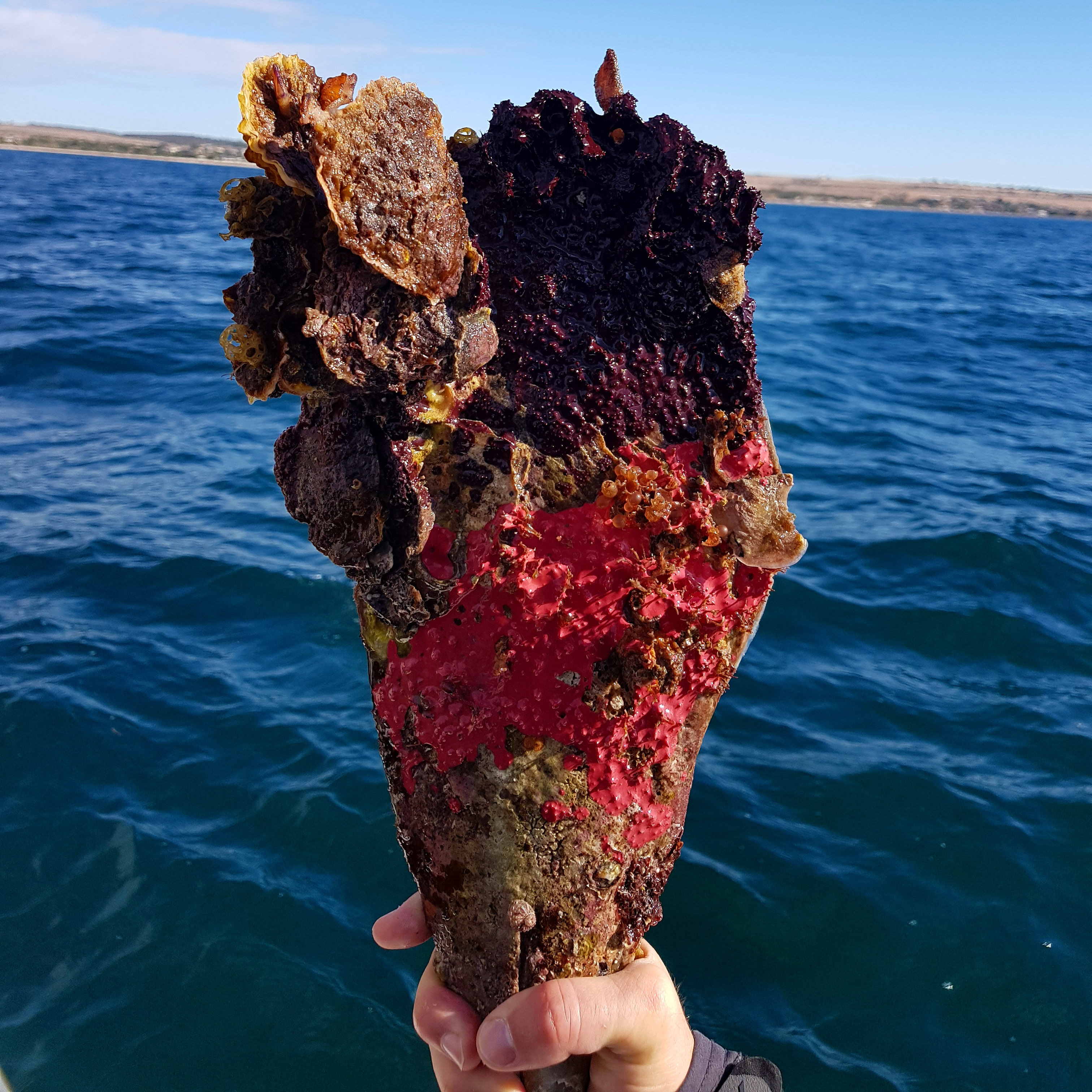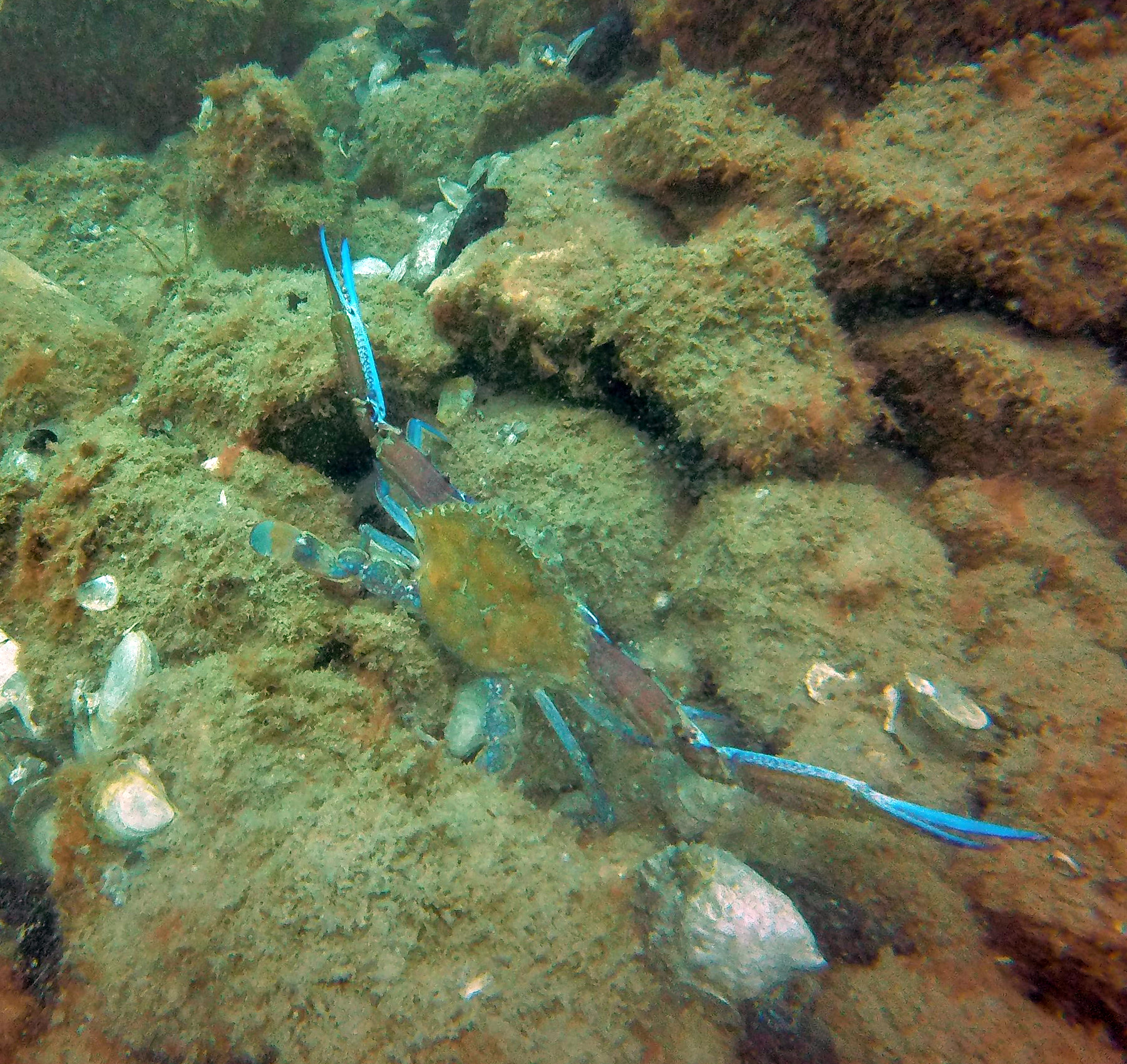A 20 hectare shellfish reef is built
Reefs are made with both living and non-living materials. First, limestone is laid down on the seafloor to give the reef height and new homes for fish and other reef animals. Then, live baby oysters are placed on top of the limestone, which will eventually grow and form a new living reef.
Year 1
Rapidly growing turfing algae are the first to colonise the reef. Baby oysters are growing under the algae, whilst common fish such as Little Weed Whiting (Neoodax balteatus) and Southern Pygmy Leatherjackets (Brachaluteres jacksonianus) also inhabit the reef.
Year 2
Oysters are beginning to emerge from the undergrowth and can be easily seen on the reef. The reef has now been colonised by more complex canopy-forming macroalgae, and has become home for small, juvenile fish such as gobies and blennies and other animals living in the rock crevices, such as worms, seastars, abalone and hermit crabs.
Year 3
Other shellfish like mussels, abalone and scallops continue to grow and add to shellfish diversity on the reef. The oysters provide food to other animals by filtering microscopic algae (phytoplankton) from the water and depositing the waste into tiny 'poo pellets'. Millions of worms and small crustaceans growing on the reef consume this waste, and are prey for larger fish and other marine life.
Year 4
Several generations of oysters are now living on the reef. Turfing algae is disappearing as slower growing oysters, sponges, corals and sea squirts take over. Larger schools of fish such as Snapper are more commonly seen and reproduce on the reef.
Year 5
Oyster 'towers' or oysters growing on top of each other, have now begun to form, creating more complexity on the reef. The reef is becoming a more attractive place for larger predatory fish such as Snapper, Bream and Salmon to live as more food is available, such as juvenile fish, shellfish and crustaceans.
Year 6
Even more oysters populate the reefs, as they grow, spawn and recruit new oyster hatchlings every year. There are now at least two generations of oysters producing baby oysters. The reef is highly diverse with many fish, squid, cuttlefish, crabs and macroalgae reproducing and sharing this restored ecosystem.
Year 7
By year seven, the restored oyster reefs look and feel much like a natural reef. Although it will still take another decade or more for the reef to fully mature, many key species and ecological foundations are established. Millions of oysters are filtering the surrounding water. The reefs act as nursery grounds for important fish and invertebrate species, and provide homes for many others. Biodiversity has increased several-fold compared to the soft-bottom habitat that used to exist at the site.




